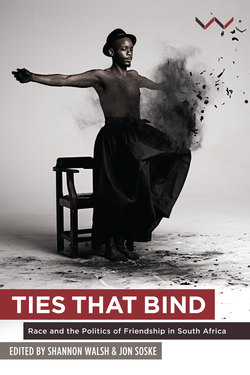Читать книгу Ties that Bind - Shannon Walsh - Страница 20
На сайте Литреса книга снята с продажи.
NOTES
Оглавление1 The chapter title is borrowed from Yambo Ouologuem’s 1968 novel Le Devoir de Violence, translated as Bound to Violence by Ralph Manheim in 1971, and later as The Duty of Violence by Christopher Wise (2008), which presents a violent vision of African history, and as Wise has argued, ‘a view that there is no such thing as a public sphere that is completely free of irrational violence, and that in certain circumstances it is even a moral duty to enact violence against the other’. It is also a reference in Lesego Rampolokeng’s poetry, and the subject of often heated discussions between Rampolokeng and me on the incapability of violence-doing and eroticism as one possible means of breaking such enslavement.
2 For a beautiful reflection on friendship in Masande Ntshanga’s debut novel, The Reactive, see ‘The Other Brother’ by Bongani Kona in The Chronic, New Cartographies (2015).
3 Gordimer’s third novel, Occasion for Loving (published in 1963), deals with the failure of tolerance and humanism; the increasing absurdity of the race laws brought friendship and love across the colour bar to a halt.
4 Years later, to explain his shifting allegiances and alliances, Lesego would quote Greg Tate on Amiri Baraka to me: ‘We are so quick to, as Greg Tate said of Amiri Baraka, grow up in public. You don’t only grow up, but we want society to see we grow up. So we turn around and crap on what we stood for in the beginning. ... And you see it happening, here. It happened with Amiri Baraka. He was part of the Beat Generation ... got married to this Jewish woman called Hettie Cohen ... then when he broke out of that, not only did he move out of that but he started embracing himself as a Black Nationalist and crapped on that for which he stood. And then when afterwards he found Black Nationalism to not be equal to what he stood for, he moved on and crapped on it, and whatever, and whatever, and whatever.’
5 Alan Paton, once a principal of the Diepkloof Reformatory, is most famous as the author of Cry, the Beloved Country (published in 1948).
6 Sasol was a leading industrial institution at the forefront of coal to oil conversion and an important target, not only guarded by South African units but also regarded as a strategic asset by western security organizations such as NATO.
7 Sekete and his comrades (Barney Molokoane and Victor Khayiyane) did not run faster than the helicopters, dogs, and bullets of the South African Defence Force, but that operation was the first of the liberation struggle in which MK combatants killed so many of the enemy.
8 See Dlamini (2014), which engages the mercurial figure of the traitor in the liberation struggle against apartheid.
9 The book has since been published by Black Ghost Books (Cape Town, 2015).
10 This reading owes a debt to Charles J. Stivale’s Gilles Deleuze’s ABC: The Folds of Friendship (2008), as well as Martin Dieck and Jens Balzer’s surreal and hilarious bande dessinée (graphic art book) Salut, Deleuze! (Hi, Deleuze), which appeared in Chimurenga 9: Conversations in Luanda and Other Graphic Stories (2006).
